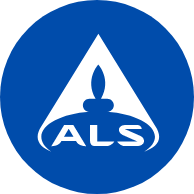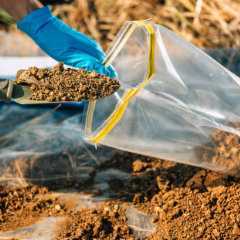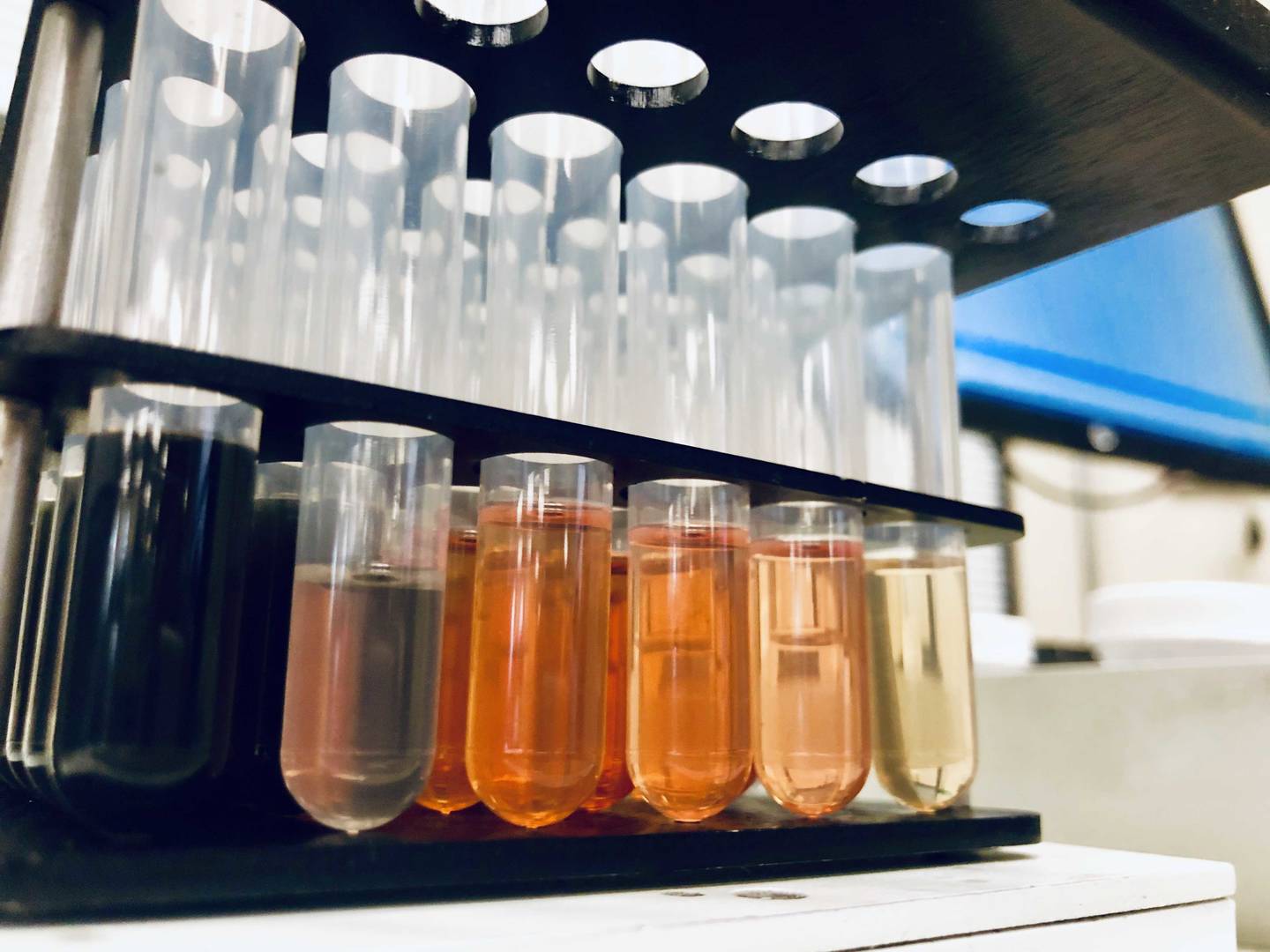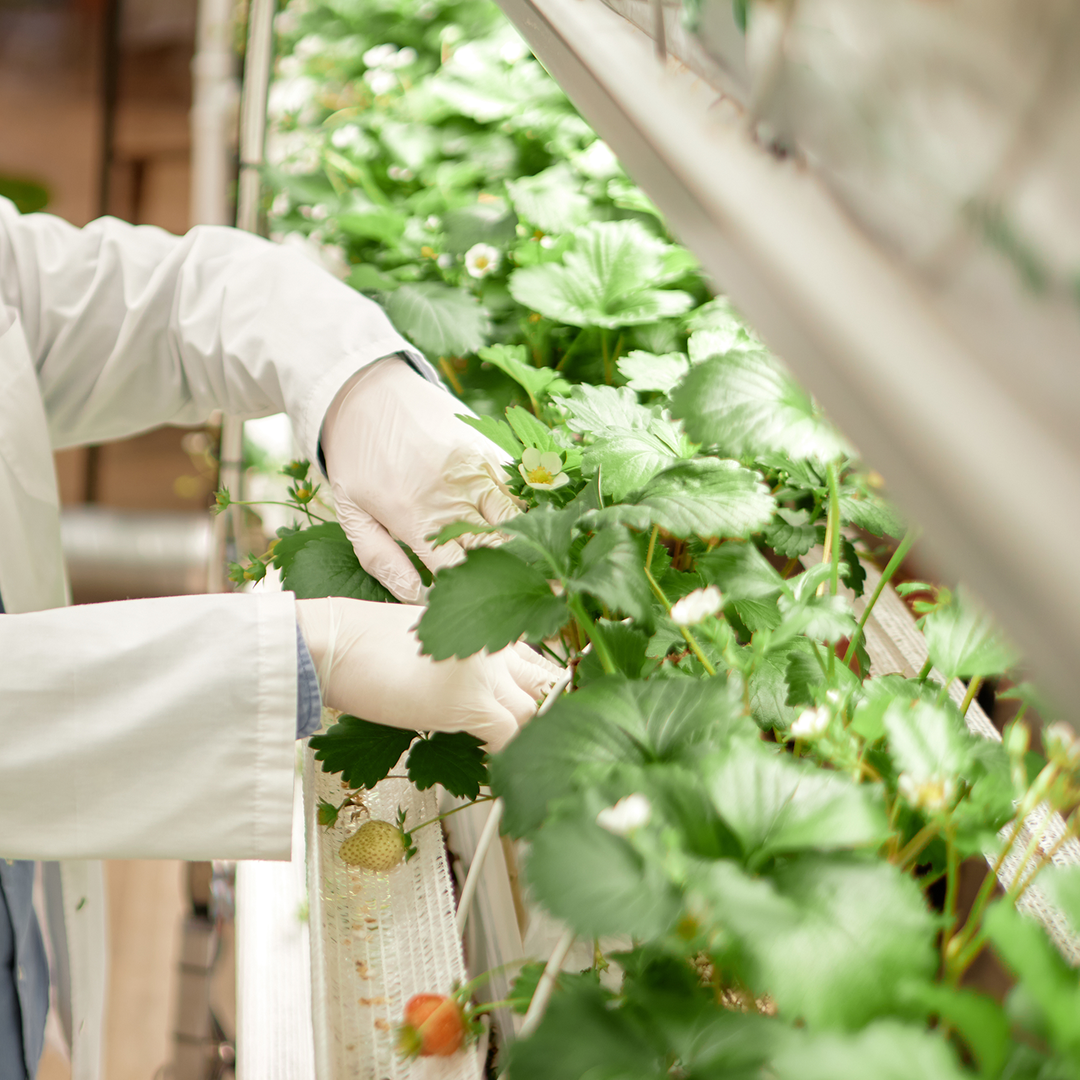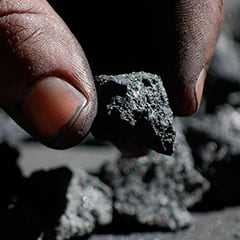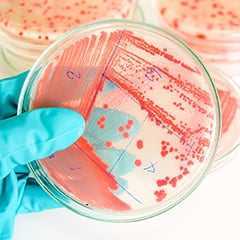EnviroMail 36 USA
Testing for PFAS in biosolids: analytical method and regulatory status in the USA
Despite the significant societal value derived from the beneficial re-use of biosolids as agricultural fertilizer, there is growing international concern they may be a potential source of per- and polyfluoroalkyl substances (PFAS), posing a risk to human health and the environment.
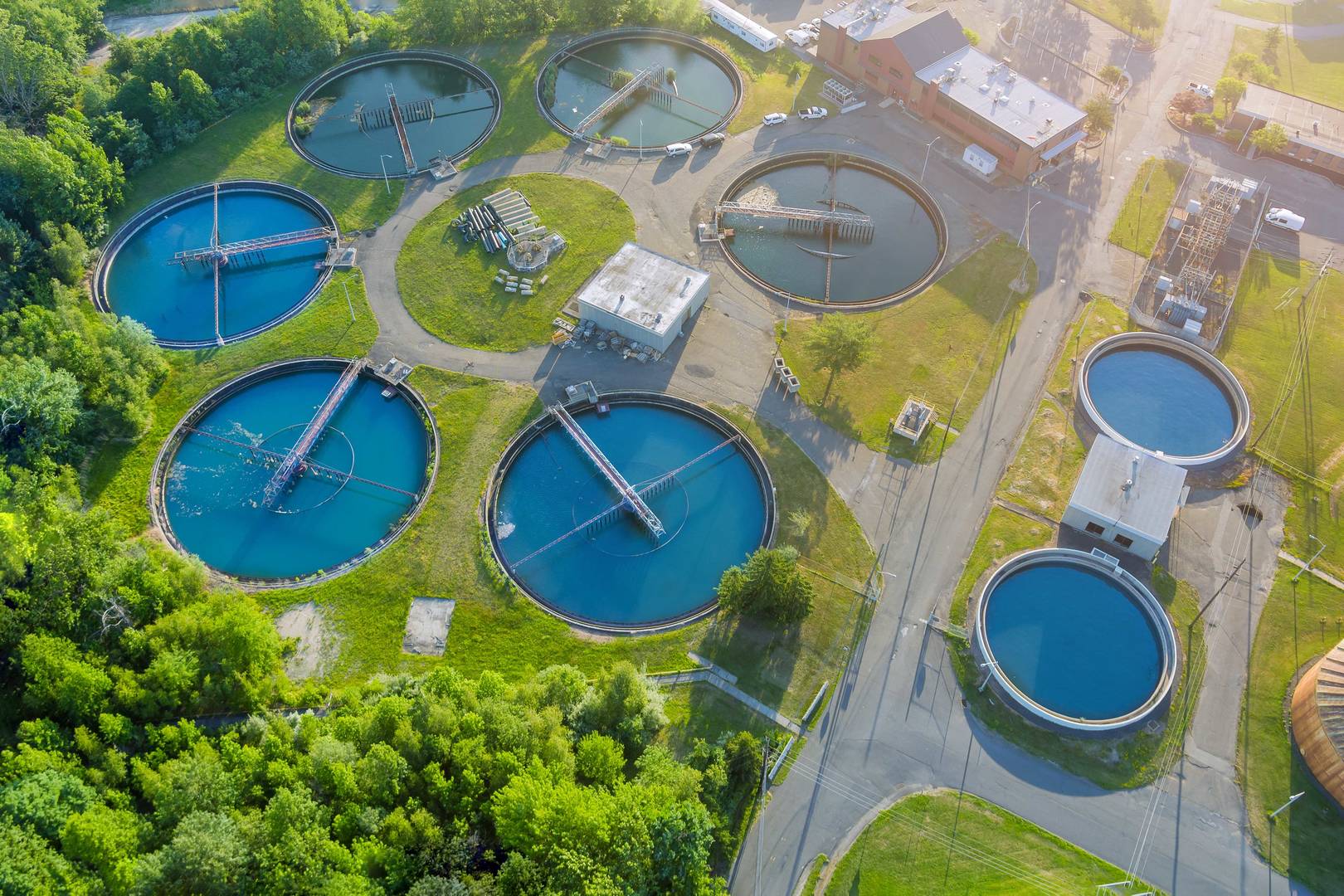
In January 2025, the EPA released a Draft Risk Assessment examining potential human health risks of exposure to two types of PFAS, PFOS and PFOA, through sewage sludge or biosolids applied as fertilizer or disposed of on land. While no federal regulations currently exist for PFAS in biosolids, several states have enacted their own limits, and others have proposed regulations currently advancing through state legislatures. ALS offers accredited testing for PFAS in biosolids by the latest version of US EPA Method 1633 for compliance with state-specific regulations.
PFAS exposure risks from biosolids
Biosolids are a treated solid byproduct generated by wastewater treatment plants (WTTPs) and are often used as a resource for agricultural land applications. While the terms biosolids and sewage sludge are often used interchangeably, sewage sludge refers to untreated semi-solid WWTP waste, whereas biosolids have undergone one or more treatment processes – such as aerobic or anaerobic digestion, thermal drying, alkaline stabilization or composting – to make them safe for beneficial use or disposal. Reusing biosolids offers multiple benefits, including soil health improvement, nutrient enrichment, carbon sequestration and reduced demand for synthetic fertilizer products.
PFAS enter municipal, commercial and industrial wastewater streams primarily through consumer and commercial use and disposal of products containing PFAS. Landfill leachate, which can contain very high levels of PFAS, is also typically introduced in WWTP influent. Toxic PFAS such as PFOS and PFOA can also be formed during wastewater treatment by the transformation of precursor compounds present in the influent.
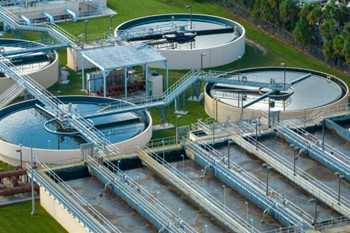
Figure 1. Wastewater treatment plant – biosolids source
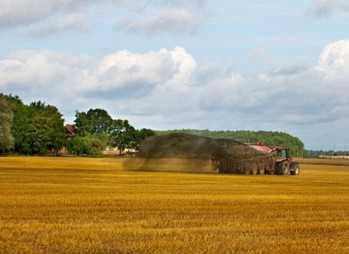
Figure 2. Agricultural land spraying of biosolids
Traditional WWTP processes do not specifically target PFAS, which means these compounds can persist in both the effluent (treated water released from the plant) and in produced biosolids. Land applied biosolids can then reintroduce PFAS that have entered the WWTP influent stream back into the environment. PFAS can leach from biosolids into groundwater and surface water and be taken up by plants, including agricultural products, creating pathways for human and animal exposure.
The Draft Draft Sewage Sludge Risk Assessment for PFOA and PFOS, published by the EPA in January 2025, indicates possible human health risks above EPA acceptable thresholds under some scenarios for land-applied sewage sludge containing only 1 part-per-billion (µg/kg) of PFOS or PFOA. The EPA risk assessment may put downward pressure on limits for PFAS in biosolids or sewage sludge in the USA and elsewhere.
Biosolids regulatory status
There are currently no requirements to monitor PFAS in biosolids in the USA, and no federal regulatory limits have been established. Individual states have the freedom to enact regulations stricter than federal requirements, however, and some states have enacted regulations on PFAS in biosolids to varying degrees of complexity. Certain states also have wider regulations, and even bans, on the import, sale, and use of biosolids entirely. States with active regulations on PFAS in biosolids at the time of this publication are listed and detailed below. This list is subject to change; some states have regulations currently progressing through state legislature that are not yet finalized, and others are currently conducting studies on
Colorado
Colorado has published an interim strategy for the management of PFAS in biosolids. Sampling frequency is determined by the amount of biosolid production per year, varying between once per year and three times per quarter. The state has established a limit for PFOS at 50µg/kg, at which the result must be reported to the state, and a source control program must be implemented. PFAS and Biosolids | Colorado Department of Public Health and Environment.
Connecticut
The direct land application of biosolids is not permitted in Connecticut, but interstate commercial laws allow for the sale of products made from biosolids in the state. Current legislation bans the use, sale or offering for sale of any biosolids products containing PFAS. Prevention of PFAS Pollution by Minimizing Future Releases - CT.gov
Maine
The direct land application and/or sale of biosolids are not permitted in Maine. State of Maine L.D. 1911
Maryland
All WWTPs are required to sample for PFOA and PFOS in biosolids prior to a land application. Testing frequency varies from once per year to once per month depending on the annual amount of sewage sludge generated. Recommended actions based on PFOS and PFOA concentrations are published, but at the time of this publication the state has not yet imposed regulatory limits by which action must be taken. The state recommends reducing application rate and implementing mitigation strategies if PFOS or PFOA are >20µg/kg and ceasing land application if PFOS or PFOA are >100µg/kg. PFAS in Biosolids Regulatory Update - Maryland.gov
Massachusetts
Massachusetts has established a requirement for quarterly monitoring of PFAS biosolids, and results are uploaded to a public portal. Residuals & Biosolids | Mass.gov
Michigan
Michigan currently has an interim standard set for the regulation of PFAS in biosolids. All facilities that land-apply biosolids must collect one representative sample of biosolids per year and analyze it for 28 PFAS analytes prior to land application. PFOS and PFOA have an established trigger limit of 20µg/kg, at which the landowner and farmer must be notified. A risk-mitigation strategy such as reducing application rate must be implemented, and a source reduction plan must be implemented. If either compound is present at 100µg/kg or higher, land application is not permitted. PFAS in biosolids - Michigan.gov
Minnesota
Minnesota’s Biosolids PFAS Strategy requires all facilities that land apply biosolids to collect one biosolids sample per year and analyze it for PFAS prior to land application. Minnesota requires that the sample is analyzed for all 40 PFAS analytes included in EPA 1633; PFOS and PFOA have established action limits. If either are >20µg/kg, results must be reported to the landowner or farmer, source reduction is encouraged, and cumulative application rates must be tracked and reported to the state. If PFOS or PFOA are >50µg/kg, results must be reported to the landowner or farmer and the state, mitigation strategies must be initiated, application rates must be reduced, and cumulative application rates must be tracked and reported. If PFOS or PFOA are >125µg/kg, land application is not permitted, and the wastewater plant effluent must be sampled and analyzed for PFAS. Minnesota Biosolids PFAS Strategy
New Hampshire
New Hampshire has established a requirement for annual monitoring and reporting of PFAS in biosolids, but the state has not yet imposed regulatory limits. Biosolids | DES - NH.gov
New Jersey
New Jersey requires facilities that land apply biosolids, under a letter of land application management approval, to monitor groundwater at the site where biosolids are land applied. Samples must be collected at least 30 days apart and tested for 15 PFAS analytes. New Jersey also requires publicly owned treatment works, with approved industrial pretreatment programs, to collect quarterly samples of influent, effluent and biosolids, and analyze the samples for all 40 PFAS analytes included in EPA 1633. Results must be reported to the state. NJDEP| Division of Water Quality | Sewage Sludge and Residuals PFAS
New York
A proposed 5-year moratorium on the sale and use of biosolids is currently progressing through the state legislature in New York. The state currently has an interim standard set for the regulation of PFAS in biosolids. PFOS and PFOA have an established trigger limit of 20µg/kg, at which additional sampling is required. If levels remain above 20µg/kg after 1 year, restrictions apply. If either of these compounds are present at 50µg/kg or higher, biosolids cannot be used for land-application. Biosolids Management - NYSDEC
Rhode Island
Rhode Island requires testing for PFAS in biosolids for any applicant seeking approval for the distribution or land application of biosolids, and any operators with existing approval before the law went into effect on September 1, 2025 must also test quarterly, with the first round of results due on December 31, 2025. The results must be reported to the state, and the state is authorized to reject any application based on the testing results. Rhode Island S0650A.pdf
Washington
Based on legislation passed in Washington in May 2025, facilities must begin sampling for biosolids by January 2027 and report results to the state no later than September 30, 2028. Additional legislative guidance on sampling requirements, including frequency, will be published by July 2026. PFAS in biosolids legislation - Washington State Department of Ecology
Wisconsin
Wisconsin requires sampling for PFAS in biosolids when WPDES (Wisconsin Pollutant Discharge Elimination System) permit applications are submitted, with subsequent sampling requirements dependent on results in the initial application. If the sum of PFOA and PFOS >150µg/kg, land application should not be allowed. If results are >50µg/kg but <150µg/kg, actions must be taken including the reduction of land application rates, additional sampling, reduction efforts, and notification to the state and impacted landowner/farmer. If results are >20µg/kg but <50µg/kg, actions must be taken including additional sampling and reduction efforts. Wisconsin - Interim Strategy for Land Application of Biosolids Containing PFAS
Laboratory Method for PFAS in Biosolids
State-specific regulations may prescribe the testing method required for biosolid sample analysis. EPA Method 1633 is commonly required, and some states (e.g., New York, Minnesota, Washington) have begun requiring the latest version of the method, EPA 1633A. Both versions of the method contain specific sample extraction protocols for biosolids. Percent solids determination is required to report results as dry weight concentrations, as many regulations require reporting in units of µg/kg. ALS capabilities for PFAS in biosolids are listed in Table 2 and include testing for all 40 analytes from EPA 1633.
Table 1. Test and Sampling Details
|
Test Method |
EPA Method 1633/1633A |
|
Sample Container |
125 mL HDPE (no PTFE liner) |
|
Preservation and Storage |
≤6°C (ship to lab within 48 hrs of |
|
Regulated Analytes holding time (PFOA and PFOS |
90 days |
The reporting limits (RLs) shown in Table 2 reflect the range available at ALS laboratories throughout the United States and assume percent solids at 10%. These RLs will be adjusted proportionately for reporting samples with solids content above or below 10%. For liquid biosolids or sludges with <2% solids, special testing arrangements and advance communication are required.
US EPA Method 1633 incorporates industry best practices for PFAS testing in complex matrices such as biosolids, including:
• LC-MS/MS instrumentation operated in multiple reaction modes (MRM) for optimal sensitivity and selectivity.
• Isotope dilution (ID) calibration to correct for loss during sample preparation and for sample matrix effects.
• Sample extracts are extensively purified to remove coextracted interferences using both activated carbon and solid phase extraction (SPE).
Sample collection and handling
Biosolids samples for PFAS testing should be protected from light and shipped with sufficient ice to maintain temperature at 0-6°C from the time of collection until arrival at the laboratory, within 48 hours of sample collection. For cooling of PFAS samples, ALS recommends double bagged regular ice in sealed poly bags (e.g., Ziploc®), or HDPE bottles filled with water and frozen. Chemical or “blue” ice should be avoided (most brands are untested for PFAS). Avoid exposure of samples to Teflon® (e.g., cap liners from other sample bottles).
To avoid cross-contamination, special precautions are important for the collection of samples for PFAS testing. Due to the prevalence of perfluorinated substances in consumer products such as waterproof clothing and fabrics, sunscreens, lotions and cleansers, grease-proof and waterproof food packaging, cleaning products, fabric softeners and cosmetics, care should be taken to avoid potential transfer from such items. Please identify samples expected to contain high levels of PFAS on chains of custody (COCs).
Please contact your ALS project manager for more information or to request sampling supplies.
|
PFAS parameters reported |
Abbreviation |
CAS number |
Reporting limits(µg/kg) |
|
Perfluoroalkyl, Per- and Polyfluoroether carboxylic acids |
|||
|
Perfluorobutanoic acid |
PFBA |
375-22-4 |
5 - 8 |
|
Perfluoropentanoic acid |
PFPEeA |
2706-90-3 |
4 - 5 |
|
Perfluorohexanoic acid |
PFHxA |
307-24-4 |
2 - 5 |
|
Perfluoroheptanoic acid |
PFHpA |
375-85-9 |
2 - 5 |
|
Perfluorooctanoic acid |
PFOA |
335-67-1 |
2 - 5 |
|
Perfluorononanoic acid |
PFNA |
375-95-1 |
2 - 5 |
|
Perfluorodecanoic acid |
PFDA |
335-76-2 |
2 - 5 |
|
Perfluoroundecanoic acid |
PFUnA |
2058-94-8 |
2 - 5 |
|
Perfluorononanoic acid, 4,8-dioxa-3H- |
ADONA |
919005-14-4 |
2 - 5 |
|
Perfluorododecanoic acid |
PFDoA |
307-55-1 |
2 - 5 |
|
Perfluorotridecanoic acid |
PFTrDA |
72629-94-8 |
2 - 5 |
|
Perfluorotetradecanoic acid |
PFTeDA |
376-06-7 |
2 - 5 |
|
Nonafluoro-3,6-dioxaheptanoic acid |
NFDHA |
151772-58-6 |
4 - 5 |
|
Perfluoro-4-methoxybutanoic acid |
PFMBA |
863090-89-5 |
4 - 5 |
|
Perfluoro-3-methoxybutanoic acid |
PFMPA |
377-73-1 |
4 - 5 |
|
Hexafluoropropylene oxide dimer acid |
HFPO-DA (GenX) |
13252-13-6 |
5 - 8 |
|
Perfluoroalkyl sulfonic acids |
|||
|
Perfluorobutanesulfonic acid |
PFBS |
375-73-5 |
2 - 5 |
|
Perfluoropentanesulfonic acid |
PFPeS |
2706-91-4 |
2 - 5 |
|
Perfluorohexanesulfonic acid |
PFHxS |
355-46-4 | 2 - 5 |
|
Perfluoroheptanesulfonic acid |
PFHpS |
375-92-8 |
2 - 5 |
|
Perfluorooctanesulfonic acid |
PFOS |
1763-23-1 |
2 - 5 |
|
Perfluorodecane sulfonic acid |
PFDS |
335-77-3 |
2 - 5 |
|
Perfluorononanesulfonic acid |
PFNS |
68259-12-1 |
2 - 5 |
|
Perfluorododecanesulfonic acid |
PFDoS |
79780-39-5 |
2 - 5 |
| Perfluorooctane sulfonamides | |||
|
Perfluorooctanesulfonamide |
PFOSA | 754-91-6 | 2 - 5 |
|
Methyl perfluorooctanesulfonamide, n- |
NMeFOSA |
31506-32-8 |
2 - 5 |
| Ethyl perfluorooctanesulfonamide, n- | NEtFOSA | 4151-50-2 | 2 - 5 |
| Perfluorooctane sulfonamidoacetic acids | |||
| Methyl perfluorooctanesulfonamidoacetic acid, n- | NMeFOSAA | 2355-31-9 | 2 - 5 |
| Ethyl perfluorooctanesulfonamidoacetic acid, n- | NEtFOSAA | 2991-50-6 | 2 - 5 |
| Perfluorooctane sulfonamide ethanols | |||
| Methyl perfluorooctanesulfonamidoethanol, n- | NMeFOSE | 24448-09-7 | 5 - 20 |
| Ethyl perfluorooctanesulfonamidoethanol, n- | NEtFOSE | 1691-99-2 | 5 - 20 |
| Ether sulfonic acids | |||
| Hexadecafluoro-3-oxanonane-1-sulfonic acid, 9-chloro- | 9CL-PF3ONS | 756426-58-1 | 5 - 8 |
| Eicosafluoro-3-oxaundecane-1-sulfonic acid, 11-chloro- | 11CL-PF3OUdS | 763051-92-9 | 5 - 8 |
| Perfluoro(2-ethoxyethane) sulfonic acid | PFEESA | 113507-82-7 | 4 - 5 |
| Fluorotelomer sulfonic acids | |||
| Fluorotelomer sulfonic acid, 4:2 | 4:2 FTS | 757124-72-4 | 2 - 8 |
| Fluorotelomer sulfonic acid, 6:2 | 6:2 FTS | 27619-97-2 | 2 - 8 |
| Fluorotelomer sulfonic acid, 8:2 | 8:2 FTS | 39108-34-4 | 2 - 8 |
| Fluorotelomer carboxylic acids | |||
| Fluorotelomer carboxylic acid, 3:3 | 3:3 FTCA | 356-02-5 | 10-150 |
| Fluorotelomer carboxylic acid, 5:3 | 5:3 FTCA | 914637-49-3 | 50-150 |
| Fluorotelomer carboxylic acid, 7:3 | 7:3 FTCA | 812-70-4 | 50-150 |
